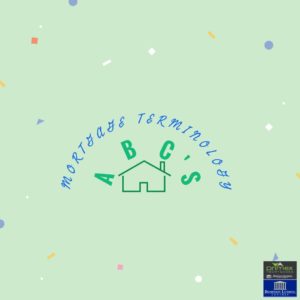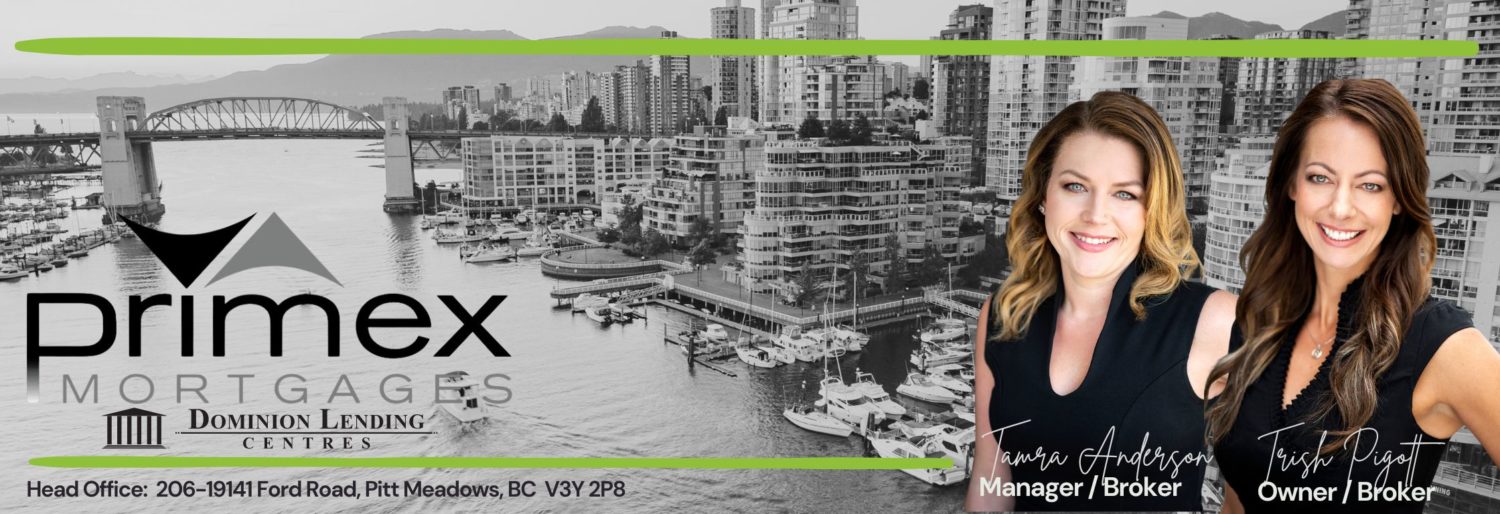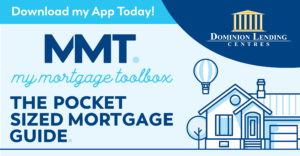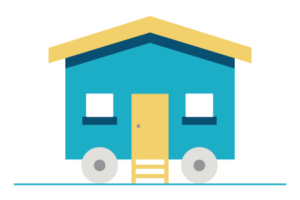Buying a home is one of the most important financial decisions you will make. It’s common for a first-time homebuyer, or even someone who is experienced in the process, to feel overwhelmed when it comes to industry jargon.
To help you understand the process and have confidence in your choices, I have put together some of the more common mortgage terminologies you will encounter during the homebuying process! While I don’t expect you to read all of these now, I hope that this will be a helpful resource for you throughout your homeownership journey.
General Mortgage Terms
Amortization: The number of years that you take to fully pay off your mortgage (not the same as your mortgage term). Amortization periods are often 15, 20, or 25 years long.
Assuming a Mortgage: Taking over the obligations of the previous owner’s (or builder’s) mortgage when you buy a property.
Buy Down Rate: The portion of the interest rate on a buyer’s mortgage that you assume when they buy your home. If you’re selling your home and the prospective buyer doesn’t like the interest rate on their mortgage, you can offer to add a certain percentage of it onto your existing mortgage. You can add a maximum of 3%.
Closing Date: The date on which the sale of a property becomes final and the buyer takes possession of the property.
Down Payment: The money that you pay up front for a house. Typically range from 5%-20% of the total value of the home.
Home Insurance: Insurance to cover both your home and its contents (also referred to as property insurance). This is different from mortgage life insurance, which pays the outstanding balance of your mortgage in full if you die.
Inspection: The process of having a qualified home inspector identify potential repairs to the property you are interested in and their estimated cost.
Lump Sum Payment: An extra payment that you make to reduce the amount of your mortgage principal.
Mortgage: A loan that you take out in order to buy property. The collateral is the property itself.
Mortgage Life Insurance: This form of insurance pays the outstanding balance of your mortgage in full if you die. This is different from home or property insurance, which insures your home and its contents.
Pre-Approved Mortgage Certificate: A written agreement that you will get a mortgage for a set amount of money at a set interest rate. Getting a pre-approved mortgage allows you to shop for a home without worrying about how you’ll pay for it.
Offer to Purchase: A legally binding agreement between you and the person who owns the house you want to buy. It includes the price you are offering, what you expect to be included with the house, and the financial conditions of sale (your financing arrangements, the closing date, etc.).
Porting: Transferring an existing mortgage from one home to a new home when you move. This is known as a “portable” mortgage.
Pre-Payment: Repaying part of your mortgage ahead of schedule. Depending on your mortgage agreement, there may be a prepayment cost for pre-paying.
Refinancing: The process of paying out the existing mortgage for purposes of establishing a new mortgage on the same property under new terms and conditions. This is usually done when a client requires additional funds. The client may be subject to a pre-payment cost.
Renewal: Once the original term of your mortgage expires, you have the option of renewing it with the original lender or paying off all of the balance outstanding.
Term: The length of time during which you pay a specific rate on the mortgage loan (i.e., the number of years in your mortgage contract). This is different than amortization; mortgages are amortized over 20-25 years, with a shorter term (typically 6 months to 5 years). After the term expires, the interest rate is usually renegotiated with the lender.
Mortgage Types
Closed Mortgage: This type of mortgage must usually remain unchanged for whatever term you agree to. Prepayment costs will apply if you payout, renegotiate, or refinance before the end of the term.
Convertible Mortgage: These offer the same security as a closed mortgage, but allows you to convert that to a longer, closed mortgage at any time – without prepayment costs. Typically associated with fixed rate mortgages.
High-Ratio Mortgage: This is the mortgage obtained when you have less than 20% of the total purchase price to put down as your downpayment. These mortgages must be insured, typically through CMHC, Genworth Financial or Canada Guaranty.
Open Mortgage: This type of mortgage may be repaid, in part or in full, at any time during the term without any prepayment costs.
Rate Types
Fixed Rate Mortgage: An interest rate that does not change during the entire mortgage term.
Variable Rate Mortgage: An interest rate that will fluctuate in accordance with the prevailing market prime rate during the mortgage term.
Mortgage Rate: The percentage interest that you pay on top of the loan principal. For example, you may take out a mortgage of $100,000 at a rate of 12%. Your monthly payments will consist of a portion of the original $100,000, plus 12% interest.
Closing Costs
These are costs that are in addition to the purchase price of a property and which are payable on the closing date, such as the following:
Appraisal: The process of determining the lending value of a property. There is usually a fee to have an appraisal done.
Interest Adjustment: The amount of interest due between the date your mortgage starts and the date the first mortgage payment is calculated from. Sometimes there is a gap between the closing date of your home purchase and the first payment date of your mortgage, so an extra payment may be required to cover this. The payment is generally due on your closing date. You can avoid all this by arranging to make your first mortgage payment in exactly one payment period (e.g., one month) after your closing date.
Land Transfer Tax: Tax that is levied (in some provinces) on any property that changes hands.
Legal Fees and Disbursements: Some of the legal costs associated with the sale or purchase of a property. It’s in your best interest to engage the services of a real estate lawyer (or a notary in Quebec).
Prepaid Property Tax and Utility Adjustments: The amount you will owe if the person selling you the home has prepaid any property taxes or utility bills. The amount to reimburse them will be calculated based on the closing date.
Property Survey: A legal description of your property and its location and dimensions. An up-to-date survey is usually required by your mortgage lender. If not available from the vendor, your lawyer can obtain the property survey for a fee.
Sales Taxes: Taxes applied to the purchase cost of a property. Some properties are sales tax exempt (GST and/or PST), and some are not. For instance, residential resale properties are usually GST exempt, while new properties require GST. Always ask before signing an offer.
If you are looking to purchase a new home (or your first one!), please don’t hesitate to reach out to me directly to set up a phone call to discuss your needs. I would be happy to help you find the best mortgage to suit your needs!





